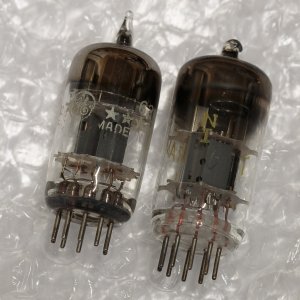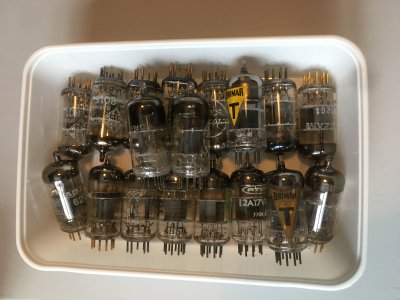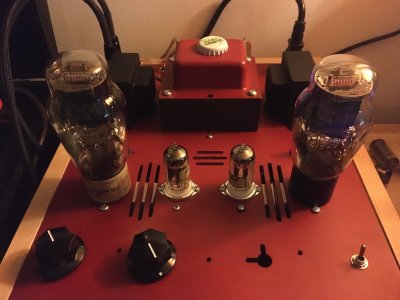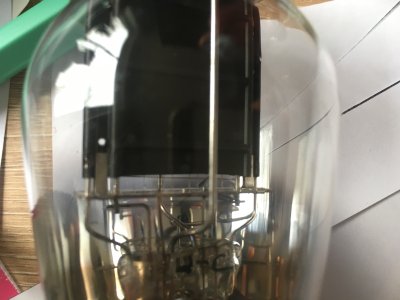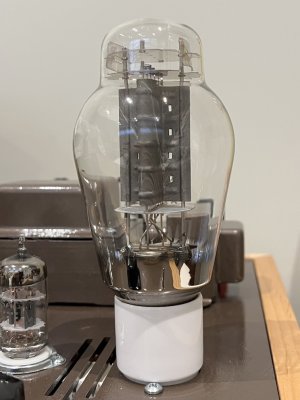Raymond P. said:
GE 12AT7 to a pair of Tungsram ECC81's
As i said on the previous page, the Tungsrams are some seriously obese tubes. ???
Paul Birkeland said:
That is the Mullard flash, and it's normal for Mullard tubes.
The "Mullard flash" is also normal on most Philips tubes from other factories (also normal on GEC tubes).
It's a result of the current in-rush property of cold filaments/conductors (the resistance rises with temperature).
Don't worry about it. I've even seen tubes where 1 filament did flash and the other didn't. Never had trouble with any.
I've just started tube rolling with the SII and found one very interesting result. There's tubes that are preferred with my speakers (Klipsch Heresy III's), not with the headphones AKG K1000's and vice versa.
For instance: Telefunken ECC81's, love them with headphones (great frequency extension, huge soundstage, etc etc, a bit much of bass), but with the speakers the voices are placed so far back they sound distant/damped/faint. This difference ain't small and is due to both the transducer (speaker vs headphone) as the effect of the room on sound from speakers.
I haven't found the time yet to compare tubes. Mainly because i'm upgrading some caps in the SII first (done with PS, parafeed and coupling caps, cathode bypass to do). In the testbox there's 10 pairs of Eu tubes at this point: Telefunken ECC81/801s, Hamburg 6201/PW, Blackburn TK1, Heerlen TK1, French 6201's (double and tripe mica), Brimar 6060's and General Electric Company 2900's.
EDIT:
My review for now (with speakers).
ECC81 TK1 Heerlen factory (Foil D getter): Full, warm, detailed; has "musicality"; recommended.
ECC81 TK1 Blackburn factory (square getter): Detailed, more analytical sounding tube, sparkle up top (a bit much for me, crazy prices, not recommended).
6201 Hamburg factory (gold pins, round foil getter): Warm, big soundstage, good details yet musical (found for 50€/pair on that selling website, recommended).
6201 PW Hamburg factory (gold pins, dual support halo getter, pinched waist): very close to normal Valvo, unobtanium, not recommended)
ECC81 Telefunken Berlin factory: Air, detailed, missing midrange some sort, analytical.
ECC801s Telefunken Ulm factory: Air, details placed in good soundstage, nice bass (not cheap +-150-200€/pair, but recommended).


